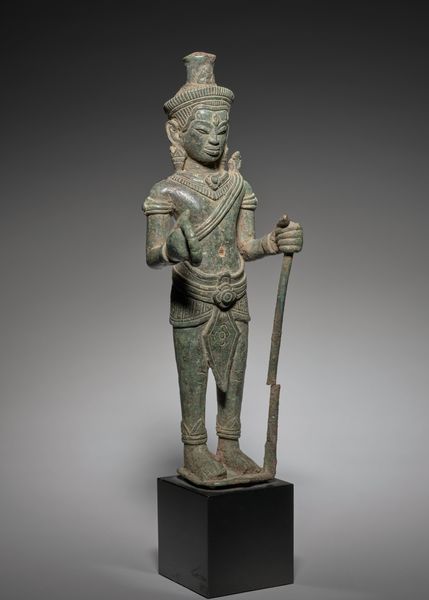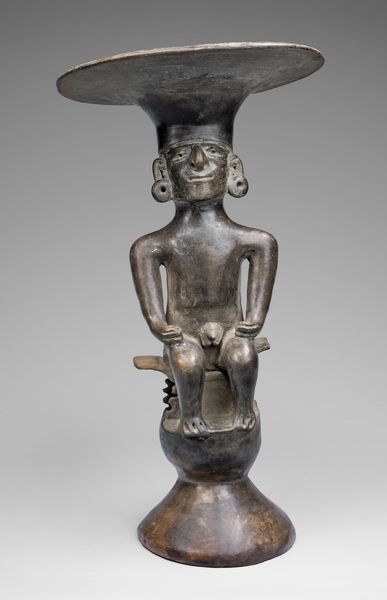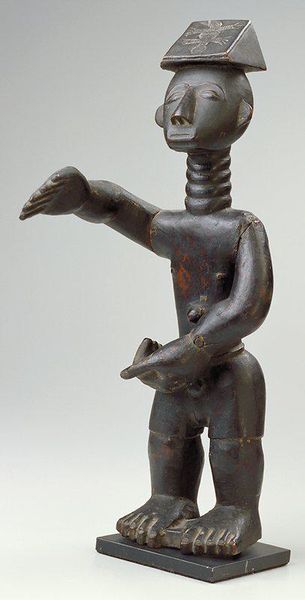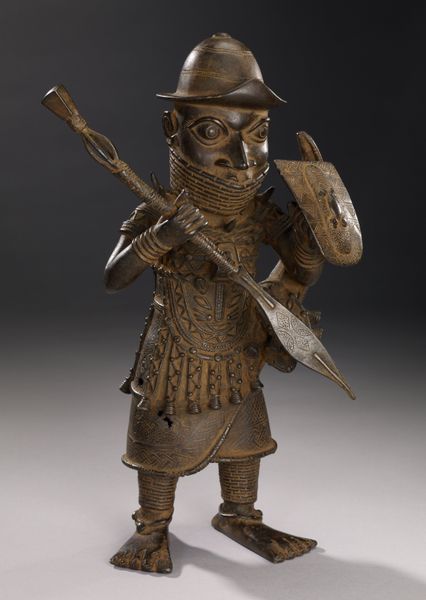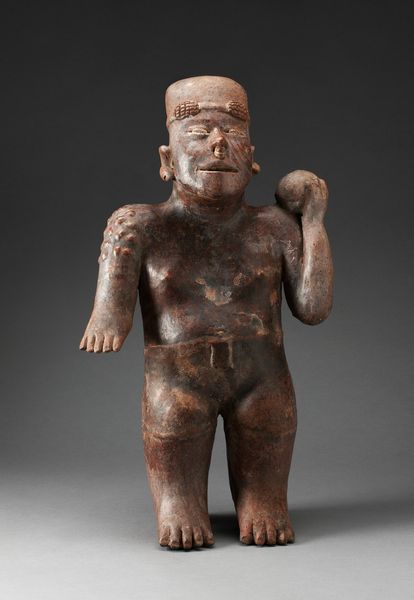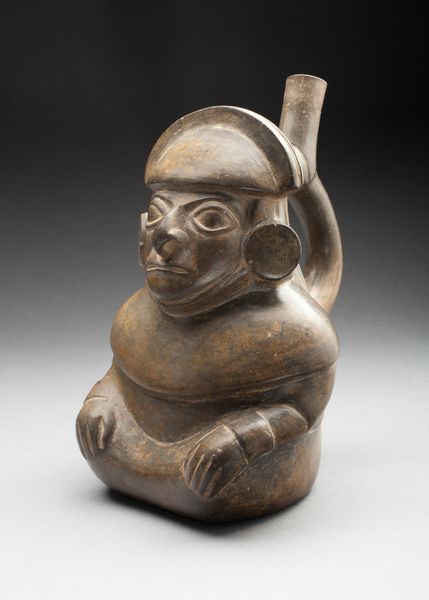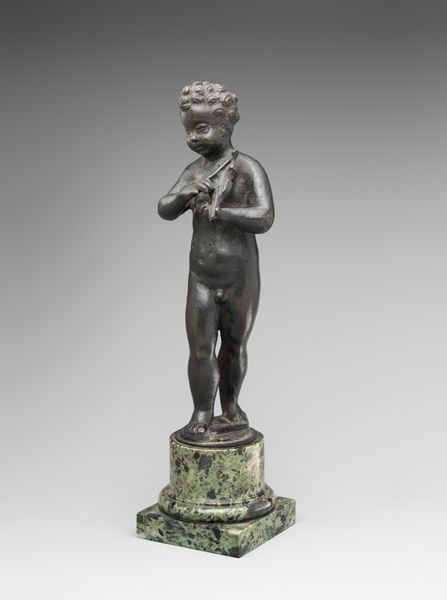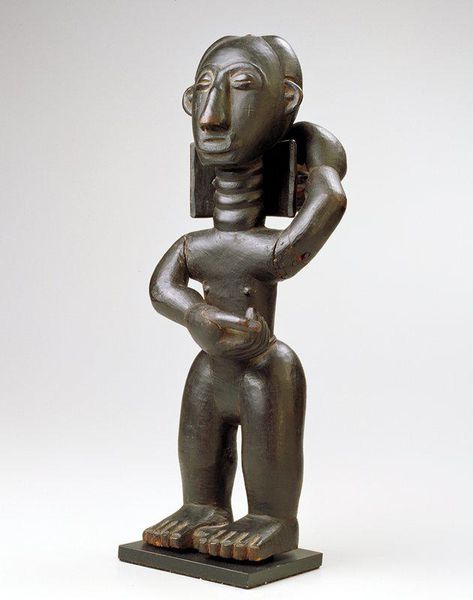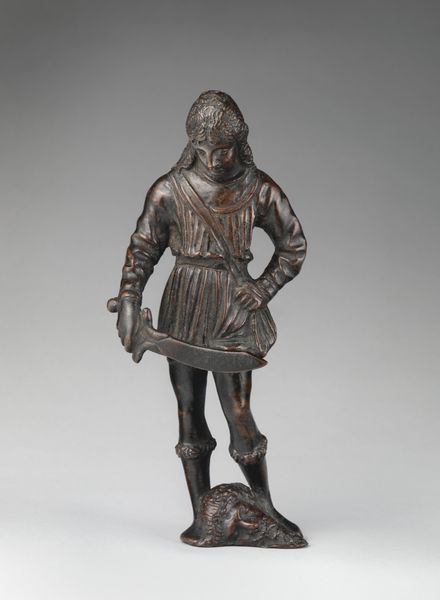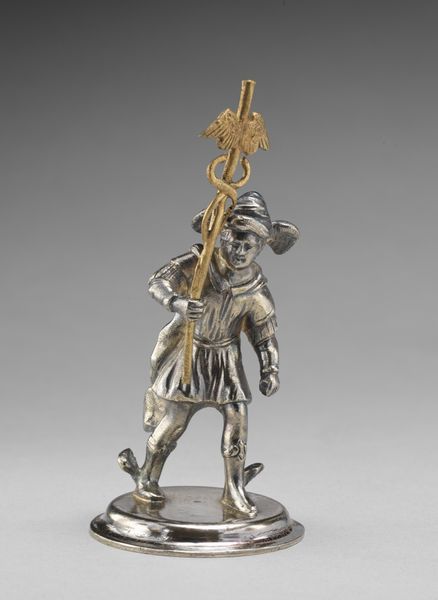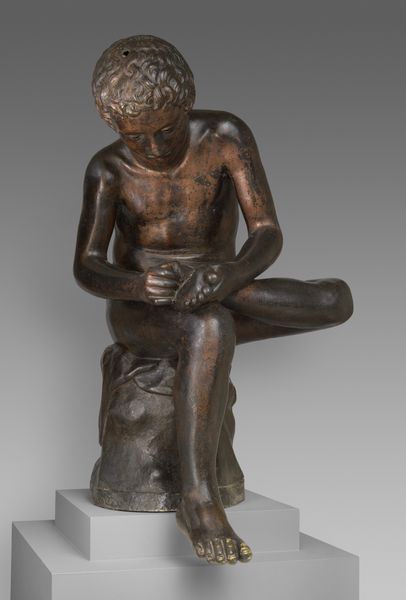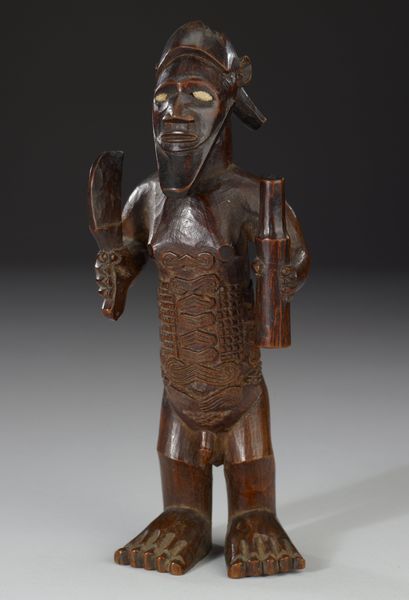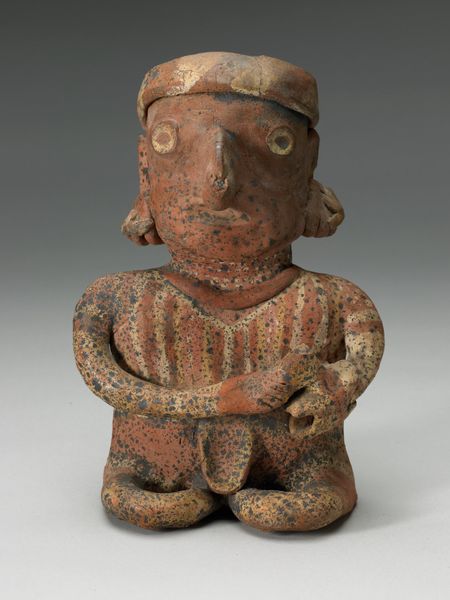
bronze, sculpture
#
portrait
#
3d sculpting
#
bronze
#
sculptural image
#
figuration
#
sculpture
Dimensions: H. 24 3/4 × W. 11 1/2 × D. 6 3/4 in. (62.9 × 29.2 × 17.2 cm)
Copyright: Public Domain
Curator: Let’s discuss “Figure: Horn Player,” a bronze sculpture made between 1550 and 1680 by an Edo artist. It's currently held in the collection of the Metropolitan Museum of Art. Editor: The first thing that strikes me is its commanding stillness. The rich, green patina of the bronze gives it an aged gravity. But then the scale – is it truly life-sized? – introduces a slightly unsettling distortion to its presence. Curator: Size can indeed be deceptive, but its power emanates from much deeper. Bronze figures, such as this one, were historically commissioned as ancestral portraits, embodiments of past rulers meant to be venerated and invoked in royal rituals. Note how the horn player isn’t just making music; he's making an offering, a connection to the spiritual world. Editor: The composition reinforces that stillness. See how the lines are rigid and nearly symmetrical? The curve of the horn is echoed in the downward sweep of his short skirt. I'm interested in how this symmetry both centers the figure and lends a formal, almost timeless quality to it. Curator: Precisely. These pieces acted as points of contact, not merely decorative elements. The individual's likeness would have been a composite – an idealized image of power, combining personal features with standard symbols of authority. Even his adornments—the necklaces, bracelets— speak volumes about status and role. Editor: The bronze's color contributes, too. That deep, resonant green interacts dynamically with the patterns cast in the metal itself, activating its surface in a constant play of light and shadow. I almost miss those textural details when viewed straight-on. Curator: Don’t forget the horn itself, acting as both musical instrument and symbol of communication – a vehicle for the ruler’s voice to extend into the community, summoning, directing, and solidifying influence. Editor: Reflecting on our discussion, the power lies in that delicate balance – the dynamic interplay between symbolic form and material substance. Curator: Indeed. The sculpture serves as both a portrait of an individual and a vessel of cultural memory, bridging the gap between the mortal and the immortal.
Comments
No comments
Be the first to comment and join the conversation on the ultimate creative platform.
